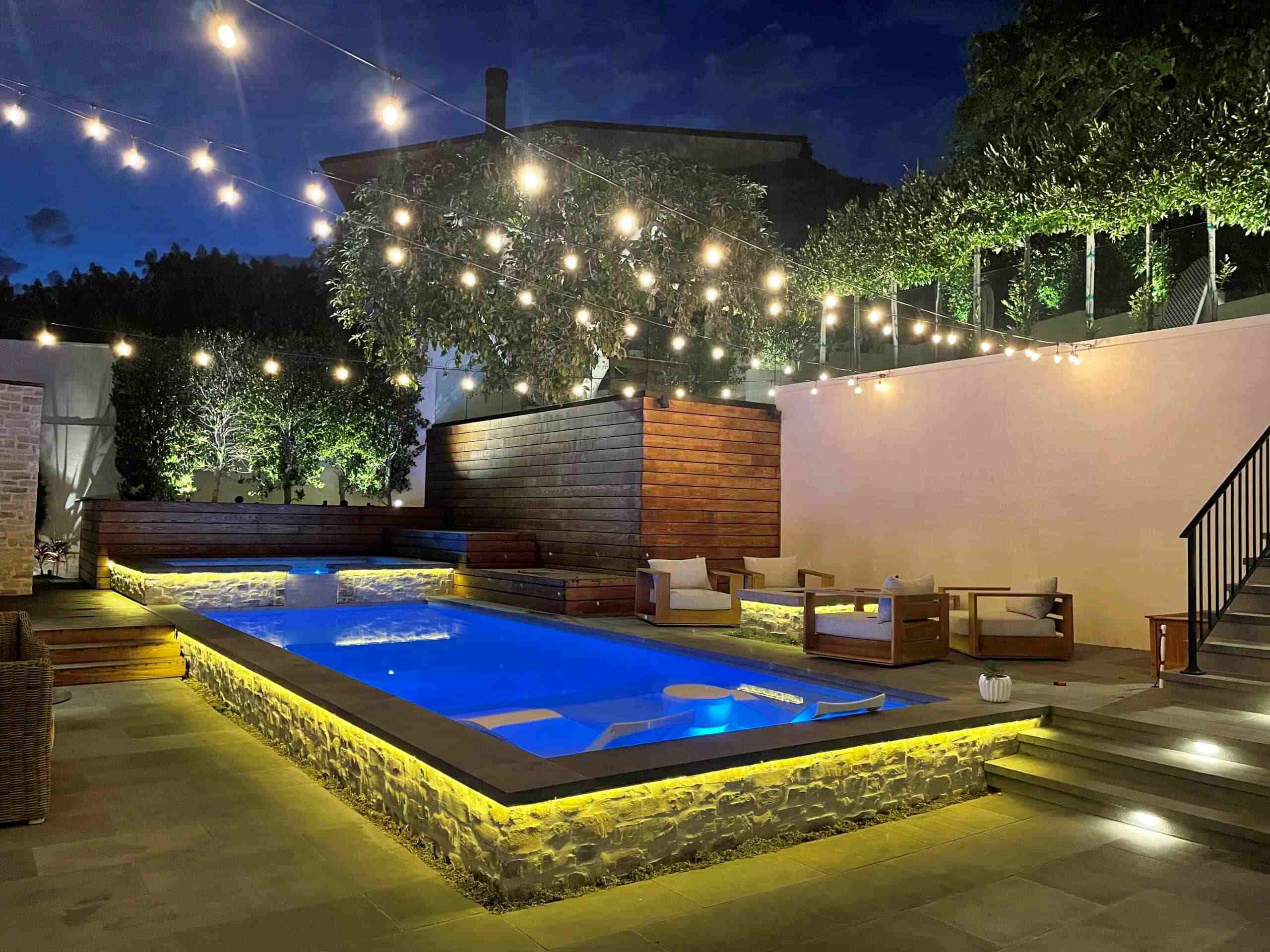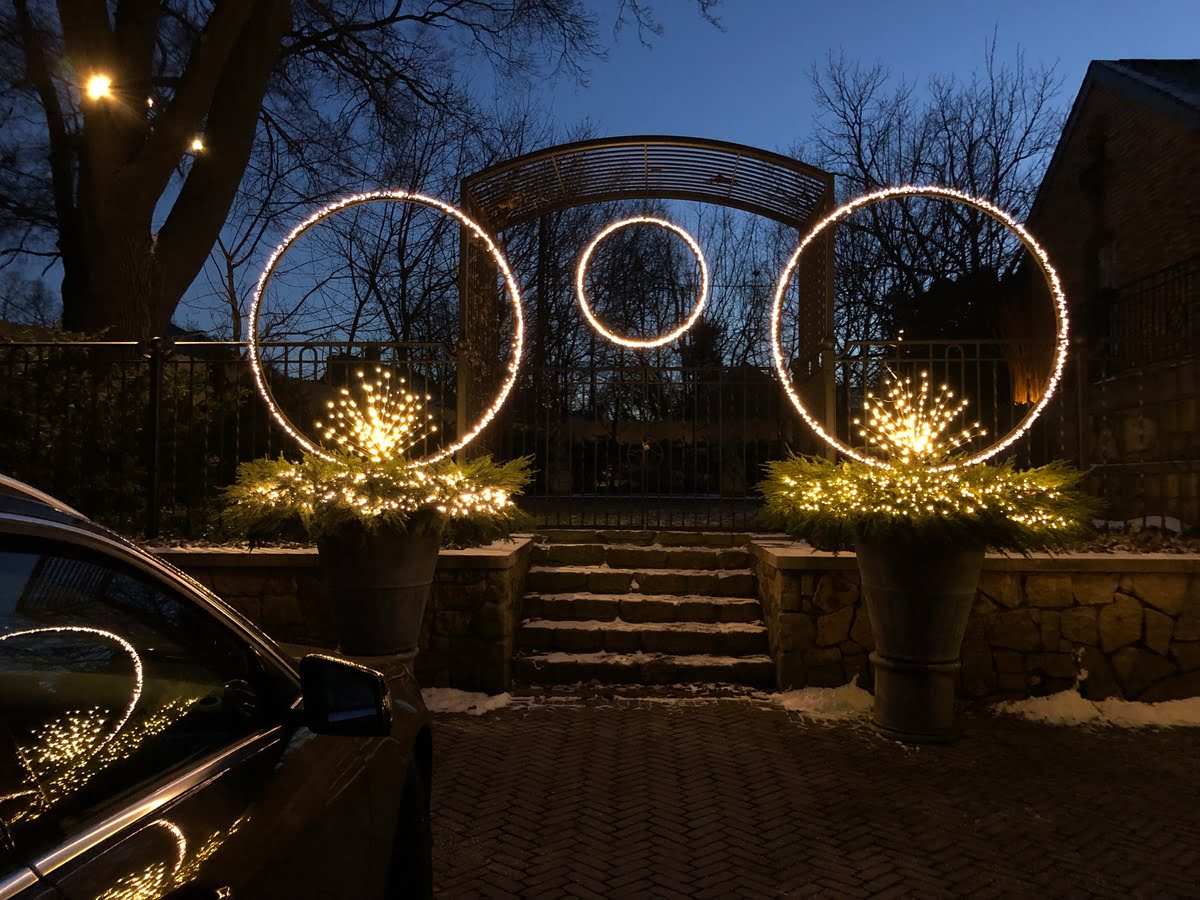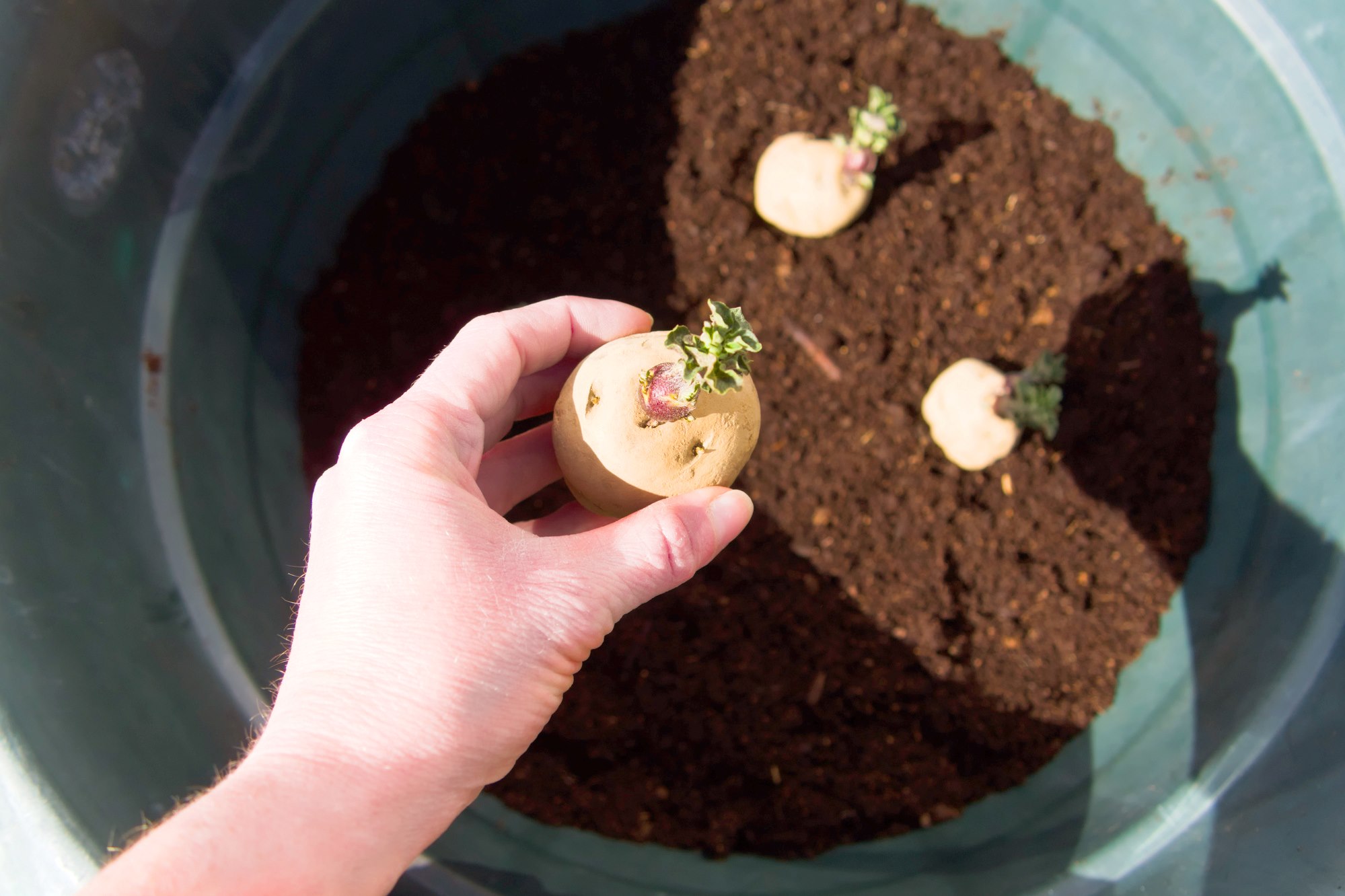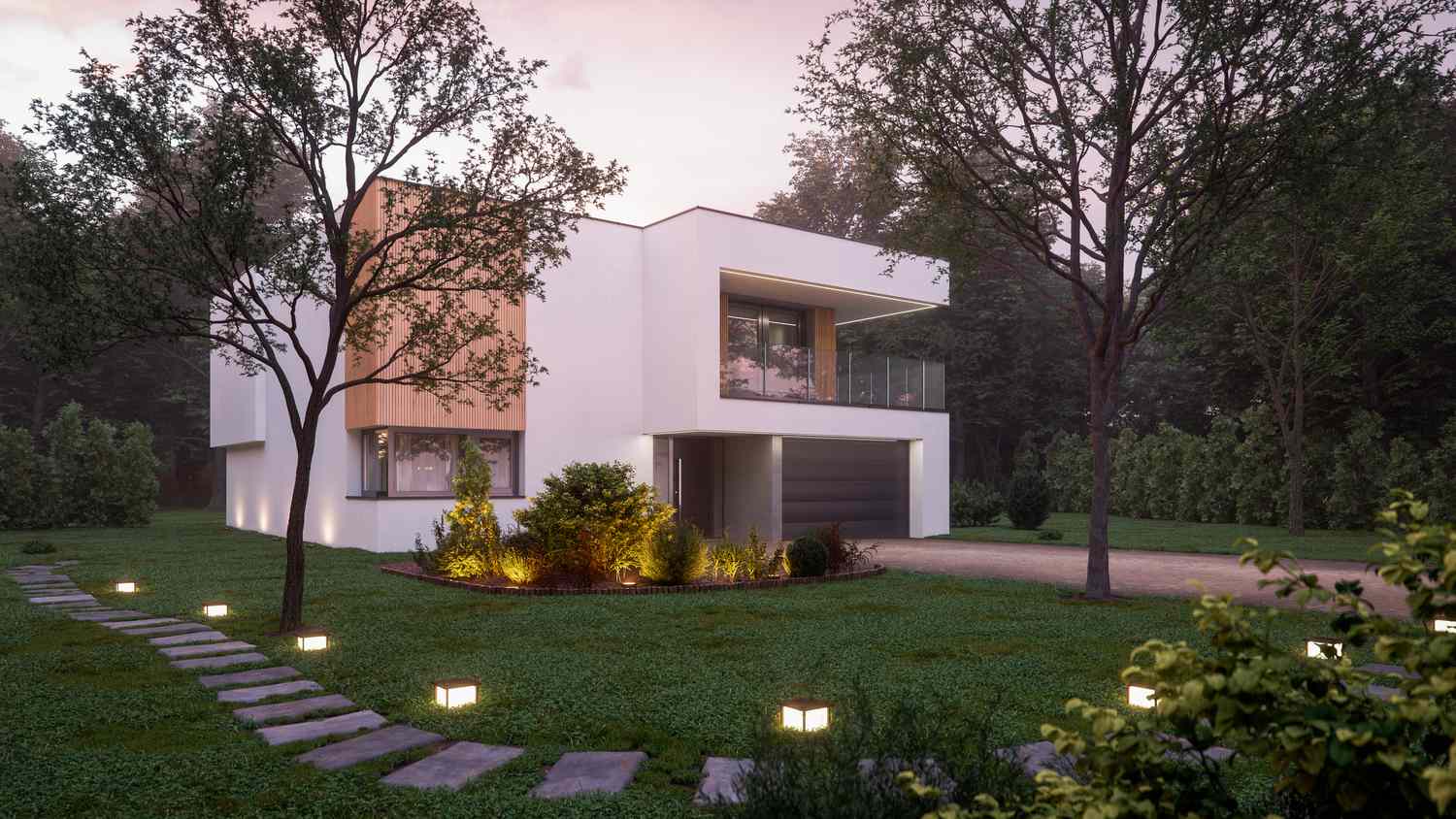Home>Gardening Techniques>DIY Projects>How To String Up Lights In Backyard


DIY Projects
How To String Up Lights In Backyard
Modified: January 22, 2024
Learn how to string up lights in your backyard with these DIY projects. Illuminate your outdoor space and create a cozy atmosphere for entertaining and relaxing.
(Many of the links in this article redirect to a specific reviewed product. Your purchase of these products through affiliate links helps to generate commission for Chicagolandgardening.com, at no extra cost. Learn more)
Table of Contents
- Introduction
- Planning and Safety Considerations
- Step 1: Determine Your Lighting Needs
- Step 2: Choose the Right Type of Lights
- Step 3: Measure and Map Out Your Backyard
- Step 4: Gather the Necessary Tools and Materials
- Step 5: Identify Power Sources
- Step 6: Install Support Structures
- Step 7: Hang the Lights
- Step 8: Secure the Cords
- Step 9: Test and Adjust the Lighting Display
- Step 10: Enjoy Your Well-Lit Backyard
- Conclusion
Introduction
Welcome to the world of backyard transformation! If you’re looking to create a magical ambiance and add a touch of enchantment to your outdoor space, stringing up lights in your backyard is the perfect DIY project for you. Whether you’re planning a cozy gathering, a festive celebration, or simply want to enjoy the tranquil beauty of your backyard at night, well-placed lighting can make a world of difference.
Not only do backyard lights create a warm and inviting atmosphere, but they also serve as a functional addition to extend your outdoor living space. From string lights delicately draped across trees and fences to overhead lanterns illuminating your patio, the possibilities are endless. With a little bit of planning, the right tools, and a creative mindset, you can easily transform your backyard into a haven of relaxation and entertainment.
Before you dive into this project, it’s crucial to consider some important planning and safety aspects. By taking the time to assess your lighting needs, choose the right type of lights, and ensure proper installation, you’ll be able to create a stunning and safe backyard lighting display that will impress both yourself and your guests.
In this article, we will guide you through the step-by-step process of how to string up lights in your backyard. You’ll learn the essential techniques and precautions to make your project a success. So, grab your tools, put on your creative hat, and let’s get started on illuminating your outdoor space!
Planning and Safety Considerations
Before you embark on stringing up lights in your backyard, it’s important to plan your project carefully and prioritize safety. By considering these factors beforehand, you’ll ensure a successful and hazard-free lighting display. Here are some key planning and safety considerations to keep in mind:
- Check local regulations: Before starting any outdoor project, it’s essential to familiarize yourself with local regulations and codes regarding the use of outdoor lighting. Some areas have specific restrictions on the types of lights, height limitations, and permitted power sources. Make sure to obtain any necessary permits or permissions before proceeding.
- Assess your electrical capacity: Take a close look at your home’s electrical capacity to determine if it can handle the additional load that outdoor lights will bring. Avoid overloading circuits or using extension cords that are not rated for outdoor use. It’s also a good idea to consult with a licensed electrician if you have any concerns or questions regarding your electrical setup.
- Choose weather-resistant lights: Opt for outdoor lights that are specifically designed for exterior use and can withstand various weather conditions. Look for lights with a UL rating for wet or damp environments, ensuring they won’t be damaged by rain, wind, or other outdoor elements.
- Determine the power source: Identify the available power sources in your backyard. You may have the option to connect lights to an existing outdoor electrical outlet, utilize solar-powered lights, or use battery-operated options for flexibility. Consider the proximity of power sources to your desired lighting locations and factor this into your planning process.
- Consider lighting effects: Think about the desired lighting effects you want to achieve in your backyard. Are you looking for soft, ambient lighting or brighter, more festive illumination? This will help you choose the right type of lights and determine the spacing and placement to create the desired atmosphere.
- Map out your lighting design: Take the time to sketch or create a visual representation of your backyard and where you want to place the lights. This will help you visualize the end result and ensure a balanced and aesthetically pleasing lighting display. Consider key areas such as seating areas, pathways, trees, and fences to determine the ideal placement for your lights.
By considering these planning and safety considerations, you’ll set yourself up for success and minimize any potential risks or issues. Remember, a well-planned and safe installation will not only enhance the beauty of your backyard but also provide peace of mind for you and your loved ones.
Step 1: Determine Your Lighting Needs
The first step in stringing up lights in your backyard is to determine your lighting needs. Consider the purpose and ambiance you want to create with your lighting display. Here are some factors to consider:
- Function: Think about how you plan to use your backyard space. Do you want to create an intimate area for relaxation, a well-lit space for entertaining guests, or a combination of both? Determining the primary function of your lighting will guide you in selecting the appropriate lights and placement.
- Areas to highlight: Identify key areas in your backyard that you want to highlight with lights. This could include seating areas, dining spaces, pathways, water features, or specific garden elements. Highlighting these areas will create focal points and add visual interest to your outdoor space.
- Lighting effects: Consider the type of lighting effects you want to achieve. Do you prefer soft and subtle lighting or a brighter and more dramatic effect? This will help you choose the right type of lights, such as warm white string lights for a cozy glow or color-changing LED lights for a vibrant and festive atmosphere.
- Lighting layers: To create depth and dimension in your backyard, consider incorporating multiple layers of lighting. This can include overhead lighting, such as string lights or lanterns, as well as ground-level lighting with pathway lights or uplights to highlight plants or architectural features.
- Lighting control: Think about how you want to control your backyard lights. Do you want to manually turn them on and off, or would you prefer a timer or smart home integration for added convenience? Determine the best method of control based on your preferences and the ease of access to the lights.
- Budget: Set a budget for your lighting project to ensure you stay within your financial means. Consider the cost of lights, installation materials, and any additional electrical work that may be needed. It’s important to find a balance between quality and affordability when selecting your lighting options.
By considering your lighting needs, you’ll have a clear vision of what you want to achieve with your backyard lighting. This will guide you in the selection of lights, placement, and overall design of your lighting display. So grab a pen and paper, and start brainstorming your lighting ideas!
Step 2: Choose the Right Type of Lights
Once you have determined your lighting needs, it’s time to choose the right type of lights for your backyard. There are various options available, each offering a unique look and ambiance. Consider the following factors when selecting your lights:
- String Lights: String lights are a popular choice for backyard lighting due to their versatility and ease of use. They come in various lengths and styles, such as globe lights or Edison bulbs, and can be hung across patios, fences, or trees to create a warm and inviting atmosphere.
- Solar-Powered Lights: If you’re looking for an eco-friendly and cost-effective lighting solution, solar-powered lights are an excellent choice. These lights harness energy from the sun during the day and automatically illuminate your backyard at night. They are easy to install and come in a wide range of styles, including stake lights, path lights, and string lights.
- LED Lights: LED lights are energy-efficient and have a longer lifespan compared to traditional incandescent bulbs. They are available in various colors, including warm white, cool white, and multicolor options. LED strip lights are great for adding a modern touch, while LED spotlights can be used to highlight specific outdoor features.
- Lanterns and Candles: For a charming and rustic look, consider incorporating lanterns or candles into your lighting display. You can place lanterns on tables, hang them from hooks, or use them to line pathways. Flameless candles are a safe option and can create a cozy glow without the risk of an open flame.
- Fairy Lights: Fairy lights, also known as twinkle lights or fairy string lights, add a whimsical and magical touch to your backyard. These delicate lights can be wrapped around trees, woven through shrubs, or used to create a canopy effect. They are available in different colors and can be battery-operated or connected to a power source.
- Bistro Lights: Bistro lights, also known as café or patio lights, are perfect for creating a charming and cozy ambiance. These lights feature multiple evenly spaced bulbs along a string, providing a warm and intimate glow. Bistro lights are commonly used to create a canopy effect above outdoor seating areas or across pergolas.
Consider the style of your backyard, the desired lighting effects, and the overall theme or mood you want to achieve when choosing the right type of lights. Mixing and matching different types of lights can also create a dynamic and visually appealing lighting display. So, explore your options and let your creativity guide you in selecting the perfect lights for your backyard!
Step 3: Measure and Map Out Your Backyard
Now that you have chosen the right type of lights, it’s time to measure and map out your backyard to determine the optimal placement of the lights. This step is crucial to ensure a balanced and visually appealing lighting display. Follow these steps to measure and map out your backyard:
- Measure the area: Start by measuring the dimensions of your backyard. Use a measuring tape to determine the length and width of the space you want to illuminate. This will help you determine the quantity of lights you’ll need and ensure you have enough coverage.
- Consider focal points: Identify any focal points in your backyard that you want to highlight with lights. This could include trees, a gazebo, a water feature, or outdoor artwork. Pay attention to the size and shape of these elements to determine how many lights you’ll need and where they should be placed for the best visual impact.
- Map out the lighting locations: Sketch a rough diagram of your backyard, including any landscaping features, seating areas, and pathways. Mark the desired locations for your lights based on the measurements and focal points you identified. This will serve as a roadmap for the installation process.
- Consider the power source: Take into account the location of power sources when mapping out your lighting display. Ensure that you can easily access power outlets or that the lights you choose are compatible with battery or solar power options. This will help you avoid the need for excessive extension cords or complicated wiring.
- Plan the spacing: Consider the spacing between each light to create a balanced and visually appealing look. Space the lights evenly, taking into account the length of the string lights or the distance between lanterns or bistro lights. Adjust the spacing as needed to ensure a cohesive design.
Mapping out your backyard and considering the measurements and placement of lights will guide you during the installation process. It will also help you determine the quantity of lights you’ll need to achieve the desired lighting effects. So, grab a pen, sketch out your backyard, and let the creativity flow as you design your well-lit outdoor oasis!
Step 4: Gather the Necessary Tools and Materials
Before you start installing the lights, it’s crucial to gather all the necessary tools and materials. Having everything prepared will make the installation process much smoother and more efficient. Here’s a list of the tools and materials you’ll need:
- String lights: Purchase the type and length of string lights that you selected during the planning phase. Choose lights that are suitable for outdoor use and can withstand the weather conditions in your area.
- Extension cords: If your chosen lights require power, ensure you have outdoor-rated extension cords that are long enough to reach from the power source to your desired lighting locations.
- Mounting hardware: Depending on where you want to hang your lights, you may need various mounting hardware. This can include hooks, clips, or adhesive clips designed for outdoor use. Make sure they are strong enough to support the weight of the lights.
- Ladders or step stools: Depending on the height at which you’ll be installing the lights, you may need ladders or step stools to safely reach the desired areas. Make sure the ladder is stable and on solid ground.
- Tape measure: Use a tape measure to ensure accurate spacing and placement of the lights. This will help create a balanced and visually appealing lighting display.
- Electrical supplies: If you’re connecting your lights to a power source, you may need wire connectors, wire strippers, and electrical tape to ensure proper and secure connections.
- Timer or smart home device (optional): If you want to have control over when your lights turn on and off, consider purchasing a timer or connecting them to a smart home device for convenient automation.
- Personal protective equipment (PPE): Ensure you have the appropriate PPE, such as gloves and safety glasses, especially if you’re working with electrical components or climbing ladders.
Gathering all the necessary tools and materials in advance will save you time and reduce any frustration during the installation process. Double-check your list to make sure you haven’t missed anything, and gather everything together in one place to have easy access as you start installing your lights.
Step 5: Identify Power Sources
Identifying the power sources in your backyard is a crucial step in the installation process. It ensures that you have the necessary electrical access to power your lights. Here’s how to identify and utilize power sources effectively:
- Outdoor Electrical Outlets: If you have outdoor electrical outlets in your backyard, these are a convenient and reliable power source for your lights. Determine their location and ensure they are in good working condition. Make sure the outlets are equipped with ground fault circuit interrupters (GFCIs) for added safety.
- Extension Cords: If the nearest outdoor electrical outlet is not in a convenient location for your lighting display, you can use outdoor-rated extension cords. Ensure that the extension cords are long enough to reach from the power source to your desired lighting areas. Keep in mind that excessive use of extension cords may impact the aesthetics and safety of your installation.
- Battery-Operated Lights: Battery-operated lights are a great option if you don’t have access to power sources or want the flexibility to place the lights anywhere in your backyard. These lights are powered by batteries and do not require an external power source. Ensure that you have enough batteries on hand to keep your lights illuminated throughout the desired period.
- Solar-Powered Lights: Solar-powered lights are another energy-efficient and convenient option. These lights have built-in solar panels that charge during the day and automatically illuminate your backyard at night. Place the solar panels in an area that receives ample sunlight to ensure optimal charging.
- Consult with an Electrician: If you’re unsure about the electrical capacity of your outdoor space or need assistance in identifying power sources, it’s always a good idea to consult with a licensed electrician. They can assess your electrical system, provide guidance on installation, and ensure that all wiring is up to code.
By identifying the appropriate power sources, you can ensure a safe and reliable supply of electricity for your lights. Whether you’re utilizing outdoor electrical outlets, extension cords, or battery-operated or solar-powered options, make sure they are compatible with the lights you have chosen. Additionally, take proper precautions when working with electrical components and follow all electrical safety guidelines.
Step 6: Install Support Structures
Now that you have identified the power sources and gathered the necessary tools and materials, it’s time to install support structures for your lights. This step is crucial to ensure that your lights are securely hung in the desired locations. Follow these guidelines for installing support structures:
- Choose the Right Mounting Hardware: Depending on the type of lights and the surfaces you will be attaching them to, select the appropriate mounting hardware. This could include hooks, clips, adhesive clips, or other fasteners designed for outdoor use.
- Prepare the Surfaces: Ensure that the surfaces where you will be attaching the lights are clean and free from any debris or dirt. This will optimize the adhesion of adhesive clips or provide a stable anchor for hooks or fasteners.
- Hanging String Lights: If you’re hanging string lights, start by attaching one end of the string to a sturdy anchor point, such as a tree branch or a hook mounted on a wall. Then, carefully drape the string lights along the desired path, ensuring they are evenly spaced and securely fastened at regular intervals.
- Installing Lanterns or Bistro Lights: For lanterns or bistro lights, use hooks or fasteners to hang them from pergolas, patio covers, or other overhead structures. Ensure that the hooks or fasteners can support the weight of the lights, and adjust the height and spacing to achieve your desired lighting effect.
- Use Ladders or Step Stools Safely: When installing support structures at higher heights, make sure to use ladders or step stools that are in good condition and placed on stable ground. Always follow proper ladder safety guidelines and ensure someone is available to assist you if needed.
- Check for Stability: After installing the support structures, give them a gentle tug and check for stability. Make any necessary adjustments or reinforcements to ensure that the lights are securely held in place.
By properly installing support structures, you’ll ensure that your lights are safe, stable, and positioned exactly where you want them. Take your time during this step to ensure a proper setup, as it will have a significant impact on the overall appearance and functionality of your lighting display.
Step 7: Hang the Lights
With the support structures in place, it’s time to hang the lights and bring your backyard illumination to life. Follow these steps to hang your lights effectively:
- Start at the Power Source: Begin by positioning your lights near the power source, whether it’s an outdoor electrical outlet, extension cord, or battery pack. This will ensure that you have enough length to reach all desired areas.
- Secure the Lights: Depending on the type of lights you’re using, securely attach them to the support structures you installed in the previous step. This may involve using the hooks, clips, or fasteners provided with the lights. Take care to evenly distribute the weight along the support structures to maintain stability.
- Straighten and Adjust: As you hang the lights, make sure they are straight and not twisted or tangled. Take the time to adjust the spacing between lights to achieve a visually appealing and balanced look. Step back periodically to assess the overall effect and make any necessary adjustments.
- Wrap Around Features: If desired, consider wrapping string lights around trees, posts, or other features in your backyard. This can add a beautiful and whimsical touch to your lighting display. Be gentle when wrapping the lights to avoid damaging the branches or the lights themselves.
- Secure Loose Ends: Ensure that all loose ends of the lights are properly secured. This will prevent them from hanging loosely or becoming tangled, especially during windy conditions. Use additional clips or fasteners, if necessary, to keep the lights in place.
- Test the Lights: Before finalizing the installation, test the lights to ensure they are working properly. Plug them in or switch them on to verify that all bulbs are illuminated. If any lights are not working, check the connections and replace any faulty bulbs as needed.
Hanging the lights is when your backyard truly starts to transform into a mesmerizing and inviting space. Take your time and pay attention to detail as you hang the lights, ensuring they are secure, straight, and evenly spaced. This will create a stunning ambiance that you and your guests will immensely enjoy.
Step 8: Secure the Cords
Once the lights are hung, it’s important to ensure that the cords are properly secured to prevent accidents, tripping hazards, and damage. Follow these steps to properly secure the cords of your backyard lights:
- Use Outdoor-Rated Extension Cords: If you’re using extension cords to power your lights, make sure they are specifically rated for outdoor use. Outdoor-rated extension cords are designed to withstand the elements and are more durable and safe compared to indoor cords.
- Secure Cords Along Support Structures: Along the length of your support structures, use zip ties or clips designed for outdoor use to secure the cords in place. This will prevent them from hanging loosely or becoming tangled, ensuring a tidy and safe installation.
- Elevate Cords Off the Ground: Raise the cords off the ground using hooks, stakes, or clips. This will help prevent moisture damage and reduce the risk of tripping hazards. Avoid placing the cords in areas where water can pool or accumulate.
- Conceal Cords Along Pathways: Along pathways or high-traffic areas, consider concealing the cords to further reduce tripping hazards. You can use cord covers, rubber mats, or even bury the cords slightly underground within protective conduit to create a seamless and safe walkway.
- Protect Cords from Wildlife: If you live in an area where wildlife may be present, take measures to protect the cords from chewing or damage. Use wire mesh or conduit to cover exposed cords, especially at ground level or near trees, to discourage animals from tampering with them.
- Check Regularly: Regularly inspect your cord connections to ensure they remain secure and in good condition. Look for signs of wear and tear, such as fraying or exposed wires, and address any issues promptly to maintain a safe lighting installation.
Securing the cords properly is essential for the safety and longevity of your lighting display. It not only reduces the risk of accidents but also helps maintain the aesthetics of your backyard. Take the time to secure the cords diligently and regularly check for any maintenance needs to preserve the beauty of your outdoor space.
Step 9: Test and Adjust the Lighting Display
After securing the cords, it’s time to test and adjust your lighting display to ensure it meets your expectations. Here’s how to test and adjust the lighting for optimal effect:
- Test Each Light Strand: Turn on the lights and carefully examine each strand to ensure that all bulbs are functioning correctly. Replace any faulty bulbs or strands as needed.
- Assess Lighting Effects: Take a step back and evaluate the overall lighting effects in your backyard. Consider the ambiance, brightness, and desired atmosphere. If necessary, make adjustments to the spacing, angles, or positioning of the lights to achieve your desired effect.
- Experiment with Dimming Options: If your lights have dimming capabilities, experiment with different brightness levels to find the perfect balance. This can create a more intimate and cozy ambiance or allow for different lighting moods depending on the occasion.
- Observe from Different Angles and Areas: Walk around your backyard and view the lighting display from various angles and areas. Take note of any areas that may require additional lights or adjustments to ensure even illumination throughout.
- Make Necessary Changes: Based on your observations, make any necessary changes to enhance the lighting display. This could involve repositioning lights, adding or removing strands, or adjusting the angle and direction of the lights to achieve the desired effect.
- Consider Lighting Control Options: If you desire more control over your lighting display, explore options such as timers or smart home integration. This will allow you to automate the lighting schedule or adjust the brightness and color remotely, adding convenience and flexibility to your backyard lighting.
Testing and adjusting your lighting display is essential to ensure that it meets your aesthetic preferences and achieves the desired atmosphere in your backyard. Take your time during this step, experiment with different options, and make adjustments as needed. Remember, the goal is to create a captivating and harmonious lighting arrangement that enhances the beauty of your outdoor space.
Step 10: Enjoy Your Well-Lit Backyard
Congratulations! You’ve completed all the steps to string up lights in your backyard. Now it’s time to sit back, relax, and enjoy your beautifully illuminated outdoor space. Here are some tips to fully enjoy the fruits of your labor:
- Bask in the Ambiance: Spend time in your backyard and soak up the enchanting atmosphere created by the lights. Whether you’re hosting a gathering, enjoying a quiet evening alone, or simply unwinding after a long day, your well-lit backyard will provide the perfect setting.
- Create Memorable Moments: Take advantage of the magical ambiance to create memorable moments with loved ones. Arrange outdoor dinners, intimate gatherings, or special celebrations under the warm glow of the lights. These precious moments will be cherished for years to come.
- Experiment with Mood and Themes: Get creative and experiment with different themes and moods depending on the occasion. You can easily change the ambiance of your backyard by replacing the light bulbs, adding decorative elements, or adjusting the lighting colors and effects.
- Appreciate the Extended Living Space: With the addition of well-placed lights, take full advantage of your extended living space. Spend evenings reading, relaxing, or engaging in your favorite hobbies outdoors. Your backyard will become an extension of your home and a sanctuary for relaxation.
- Maintain Regular Maintenance: Keep your well-lit backyard in top shape by performing regular maintenance. Replace any burnt-out bulbs promptly, inspect and secure the cords periodically, and clean the lights and support structures as needed to ensure that they continue to shine brightly.
- Enjoy Year-Round: Don’t limit the enjoyment of your well-lit backyard to just one season. With appropriate weather-resistant lights, you can continue to enjoy your outdoor oasis year-round. Whether it’s a cozy winter gathering or a tranquil summer evening, your well-lit backyard is ready to be your retreat.
Now, take a moment to relish the fruits of your hard work and rejoice in the transformation of your backyard into a beautifully lit sanctuary. Create lasting memories, savor peaceful moments, and embrace the joy that comes with having a well-lit outdoor space tailored to your personal tastes and desires.
Conclusion
Congratulations on successfully completing the process of stringing up lights in your backyard! By following the step-by-step guide, you have transformed your outdoor space into a captivating and inviting sanctuary. From determining your lighting needs to choosing the right lights, measuring and mapping out your backyard, and finally hanging and securing the lights, you have created a well-lit oasis that enhances both the aesthetics and functionality of your backyard.
By considering safety considerations, planning ahead, and utilizing the appropriate tools and materials, you have ensured a safe and enjoyable lighting display. Securing the cords and making necessary adjustments have further enhanced the visual appeal and minimized any potential hazards. Now, it’s time to kick back, relax, and fully enjoy the ambiance and warmth created by your well-lit backyard.
Remember to maintain regular maintenance, such as testing bulbs, securing cords, and cleaning the lights, to ensure that your backyard remains stunning and safe for years to come. Additionally, don’t hesitate to get creative and experiment with different lighting effects, themes, and control options to suit different occasions and moods.
Your well-lit backyard is now a space to create lasting memories, host unforgettable gatherings, and enjoy quiet evenings in the company of loved ones. Embrace the extended living area that your well-lit backyard offers, appreciate the enchanting atmosphere, and make the most of your outdoor sanctuary throughout the changing seasons.
So, go ahead and make the most of your well-lit backyard. Sit back, relax, and revel in the magical ambiance you have created. Your beautifully illuminated outdoor space is ready to be enjoyed and admired by all!






